When planning an eco-friendly wedding, your thoughts might initially turn to reducing paper and plastic waste or serving organic, locally sourced food. Yet, another impactful way to embrace sustainability is by incorporating native flowers into your celebration. Native flowers not only offer a more eco-conscious alternative to commercially grown blooms but also provide a unique opportunity to add a personal touch and showcase your love of nature. In this guide, we’ll explore how to source native flowers responsibly, offer tips on arranging them, and share creative ideas for using them throughout your wedding, from stunning bouquets to meaningful favors.
The Environmental Impact of Commercially Grown Flowers
Most flowers found in standard florist shops are commercially grown and often imported from countries like South America, resulting in a substantial carbon footprint due to long-distance transportation. Native flowers, however, can be sourced locally, significantly reducing the emissions associated with shipping. This local sourcing also means less waste from packaging and transportation materials.
Also, commercially grown flowers are typically cultivated using large amounts of pesticides and synthetic fertilizers, which can have detrimental effects on ecosystems and water sources. In contrast, native plants generally require fewer, if any, chemical treatments, especially if you grow them yourself. This makes them a healthier option for the environment and safer for pollinators like bees and butterflies.
Finally, the water requirements for commercially grown flowers are often much higher than for native species. Native plants are adapted to local climates and soil conditions, making them more drought-tolerant and less demanding on water resources. By choosing native flowers, you’re not only reducing water consumption but also supporting a more sustainable and eco-friendly floral industry.
Sourcing Native Flowers
Now that you’re convinced native flowers are the perfect choice for your wedding, let’s dive into how to source them responsibly and ethically. Before you start gathering your blooms, it’s crucial to remember that collecting plants without the landowner’s permission is illegal. Always ensure you’re sourcing ethically and legally to protect local ecosystems and maintain the integrity of natural habitats.
Finding a Florist
If you’re fortunate enough to find a local florist experienced in working with native flowers or open to experimenting, that’s a fantastic option. However, in many areas, this can be challenging, as not all florists have access to or familiarity with native plants. Sourcing your own native flowers gives you the ability to ensure they are true natives and ethically harvested. Plus, it might even help you save money by avoiding the markups that come with traditional floral arrangements.
Your Own Garden or Friends’ Gardens
One of the most rewarding and personal ways to source native flowers is from your own garden or the gardens of friends and family. Using flowers you’ve grown yourself adds an extra layer of meaning to your arrangements. If cutting from existing plants feels like an emotional challenge, consider growing specific flowers for the wedding well in advance. The most cost-effective method is to grow from seed, though this requires planning a few years ahead to ensure the plants reach full bloom. For a quicker option, growing from plugs can be effective. While more expensive, if you select species that produce multiple blooms per plant, it can be a worthwhile investment. If you don’t already have a favorite nursery that sells native plants, the Wild Ones nursery list can help you find a local source for growing your native wedding flowers.
Tips for Cutting Flowers for Arranging
- Choose the Right Time: The best times to cut flowers are early in the morning or late in the evening when temperatures are cooler. This helps preserve the flowers’ moisture content, keeping them fresh and vibrant.
- Choose Your Tools: Use a bucket with a wide opening, like a 5-gallon bucket, and a pair of sharp clippers or scissors. Clean your tools before use to prevent the spread of bacteria that could harm the flowers.
- Prepare the Bucket: Fill the bucket with cool water, about 1-2 inches deep. This will allow the flowers to start hydrating immediately after being cut.
- Cut the Stems: Using your clippers, cut the stems at a 45-degree angle. This increases the surface area for water absorption, helping the flowers stay hydrated. Cut the stems longer than you think you’ll need; you can always trim them down later.
- Strip Lower Leaves: Remove any leaves that will be submerged in water when you make your arrangement. Leaves left in the water can decay and introduce bacteria, which can shorten the lifespan of your flowers.
- Store Properly: Keep your bucket of freshly cut flowers in a cool, shaded area until you’re ready to use them. Make sure to keep the water topped off to ensure the flowers remain hydrated.
Tips for Keeping Flowers and Arrangements Fresh Until the Wedding and During
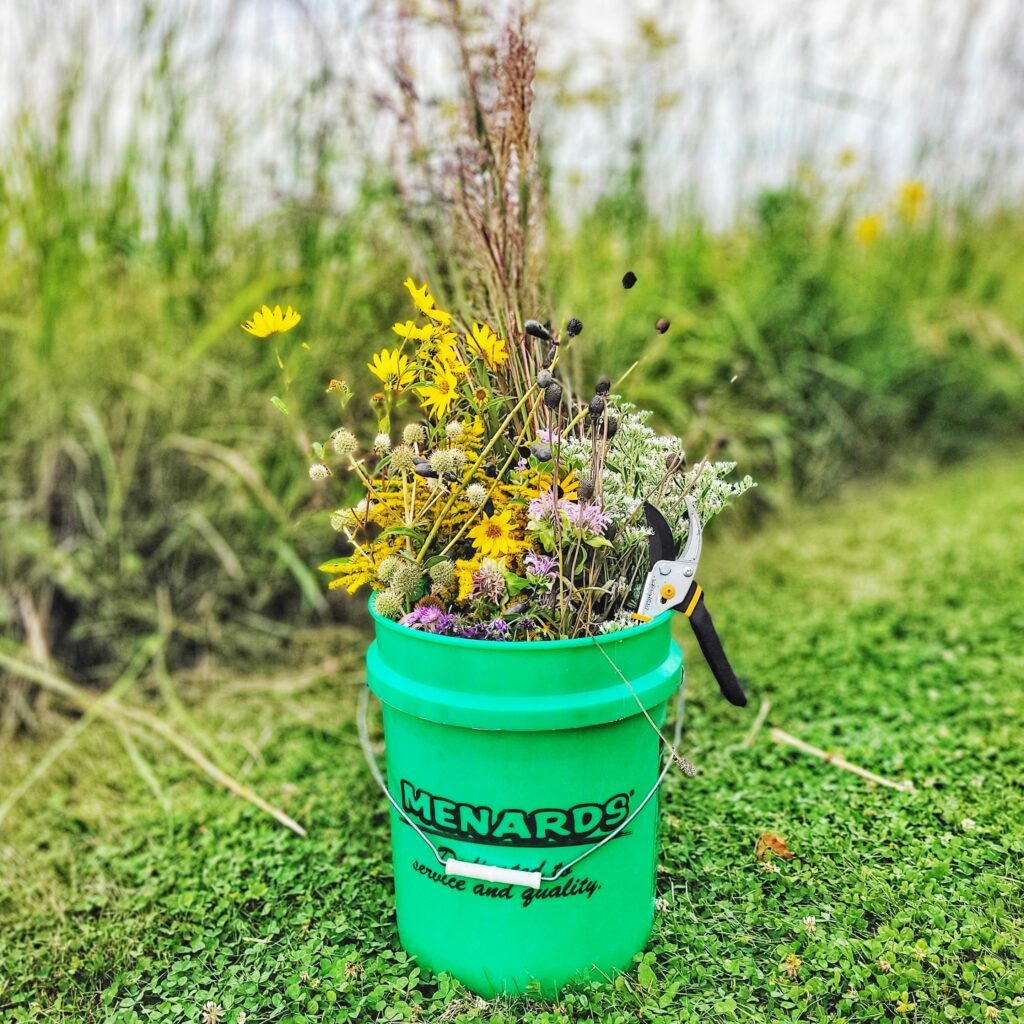
- Hydration is Key: Ensure that flowers are kept well-hydrated from the moment they’re cut until they’re arranged. For arrangements, keep stems in water as long as possible before displaying them.
- Cool Storage: Store flowers in a cool, dark place. If possible, use a refrigerator to keep the flowers fresh. Avoid placing them near fruits or vegetables, as the ethylene gas they emit can speed up wilting.
- Use Floral Preservative: Add a floral preservative to the water in your buckets or vases. These can help nourish the flowers and inhibit bacterial growth. You can make a simple homemade preservative with water, sugar, and a few drops of bleach.
- Mist Regularly: Lightly mist the petals with water throughout the day to keep them hydrated, especially if you’re in a dry or warm environment.
- Avoid Direct Sunlight and Heat: During the wedding, keep the arrangements out of direct sunlight and away from sources of heat, like candles or heaters. This will prevent them from wilting too quickly.
- Transport Carefully: When transporting your flowers to the venue, keep them in a cool, ventilated vehicle. Place arrangements in sturdy containers to prevent tipping or damage during the journey.
- Trim Stems Daily: For bouquets and arrangements, trim the stems daily to allow for better water uptake. Remove a small section of the stem at a 45-degree angle and immediately place the flowers back into fresh water.
- Limit Handling: Handle the flowers as little as possible. Oils from your hands can affect the petals, and frequent handling can cause bruising and damage.
Native Flowers to Consider
There are so many native flowers to consider for your wedding! There’s popular favorites and the unexpected choices that can add a unique personality to your arrangements. Here is a non-exhaustive list of native flowers perfect for weddings to get you started:
- Common Choices: Rudbeckia, anemone, columbine (Aquilegia), rose milkweed (Asclepias incarnata), indigo (Baptisia), coreopsis, coneflower (Echinacea), sunflower (Helianthus), lupine (Lupinus), aster (Symphyotrichum)
- Unexpected Choices: Onions (Allium), partridge pea (Chamaecrista fasciculata), rattlesnake master (Eryngium yuccifolium), spiderwort (Tradescantia), tulip tree (Liriodendron tulipifera)
- Fillers: Ferns, berries (baneberry, Actaea), pussytoes (Antennaria), boneset (Eupatorium), grasses, sedges, goldenrod (Solidago), vervain (Verbena)
Incorporating Native Flowers into Your Wedding Arrangements
There’s a wide variety of design aesthetics you can achieve with native flowers. Simple arrangements give a natural, wild look, as if freshly picked from a meadow. For a more refined and elegant style, use traditional arrangement techniques with native flowers. You’re only limited by seasonality and your creativity.
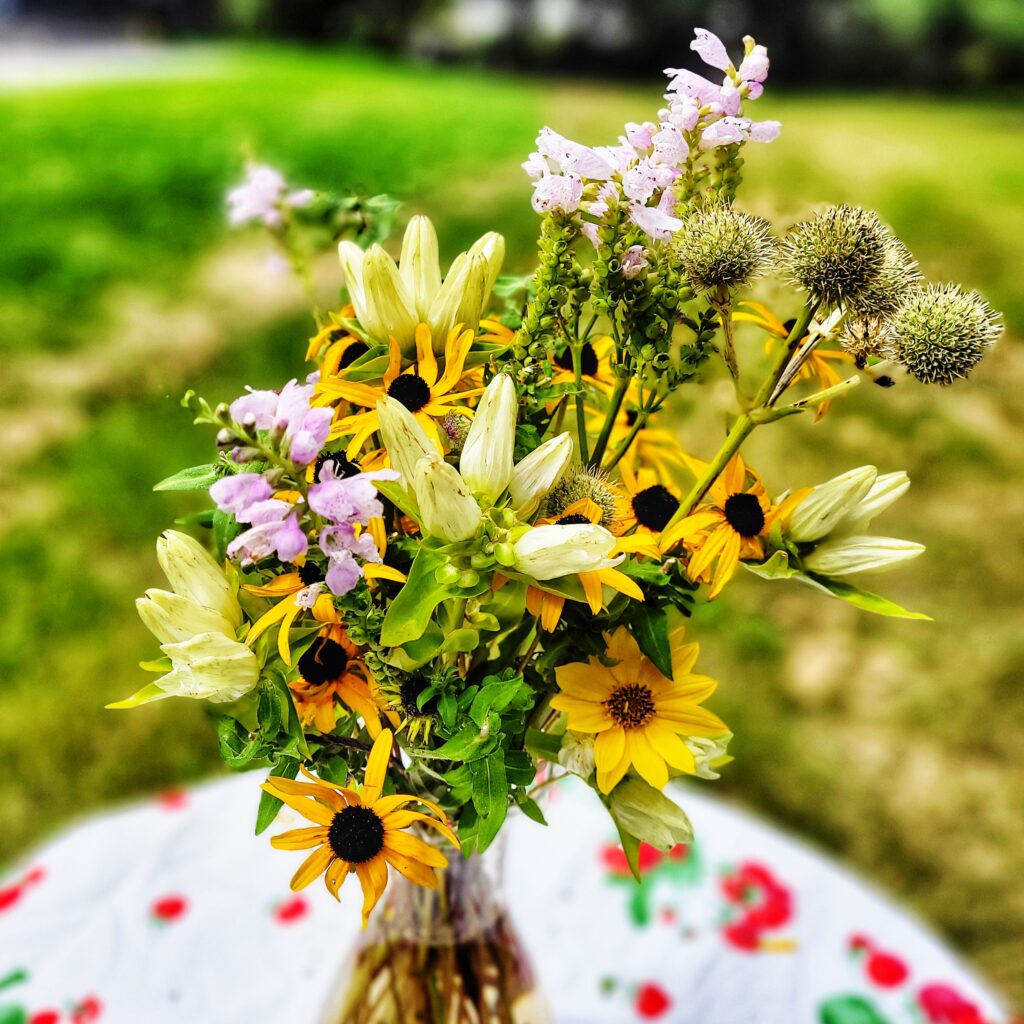
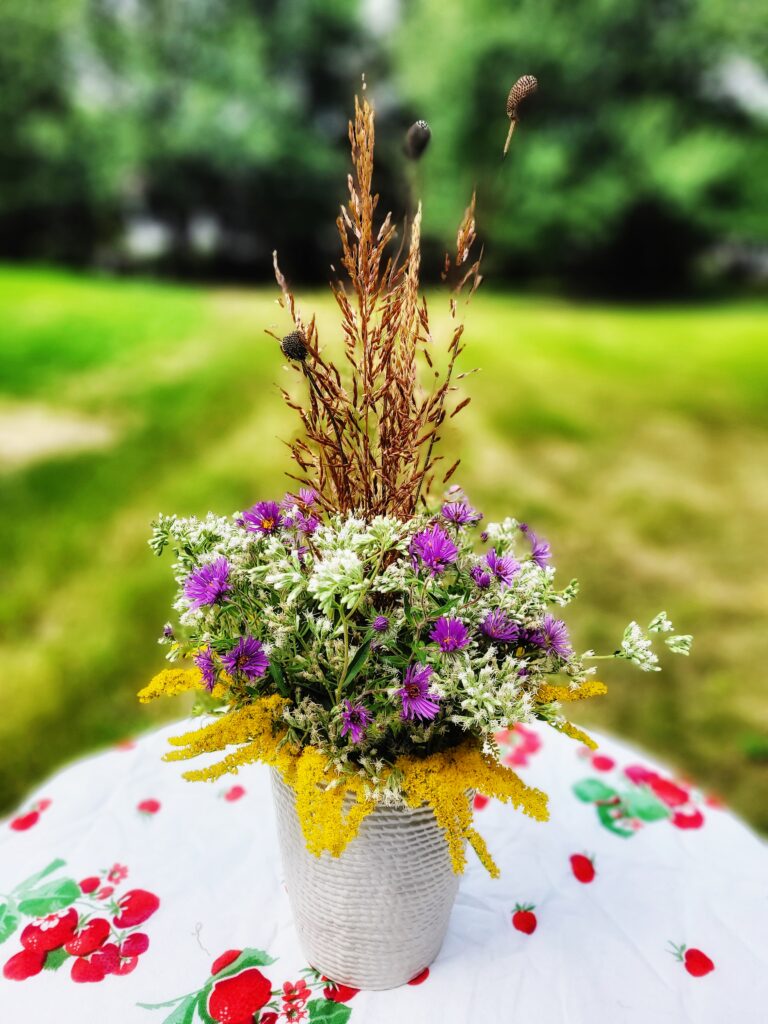
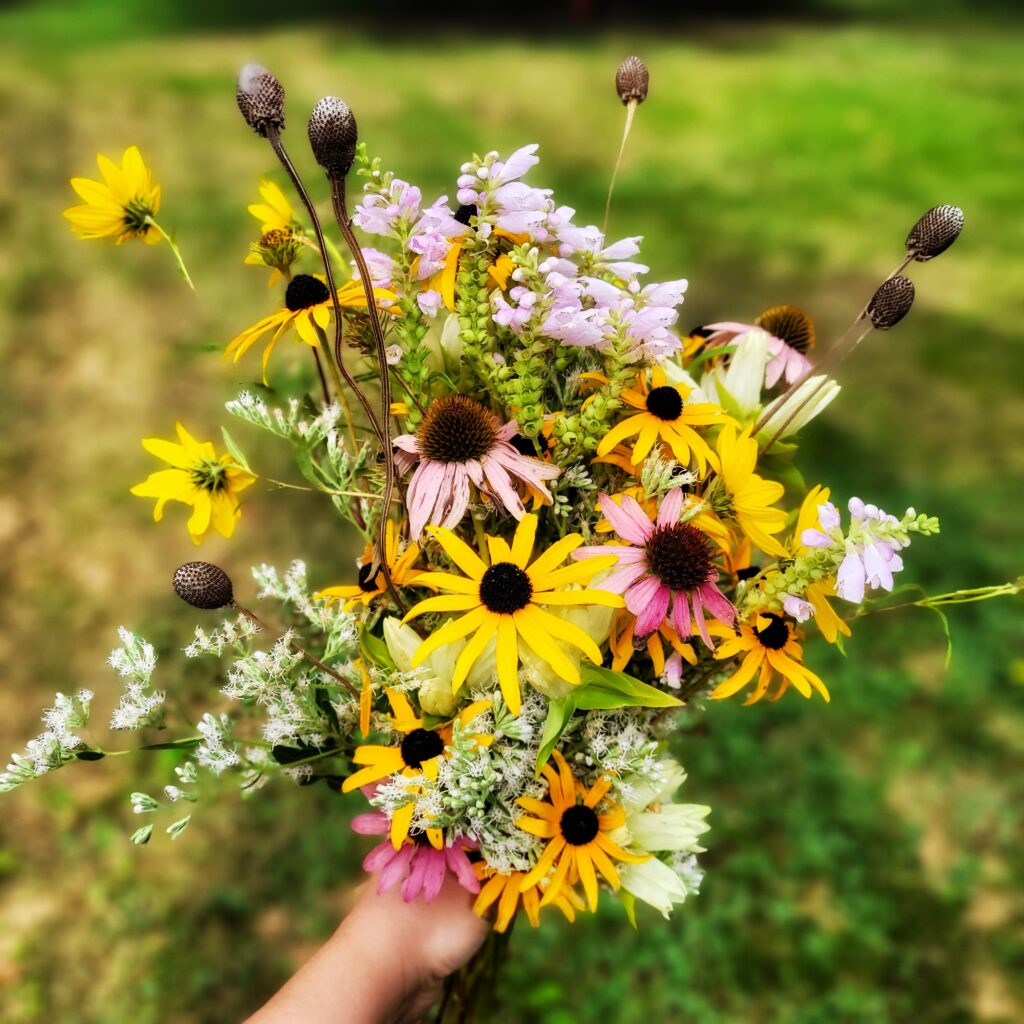
One of the key benefits of native flowers is their reduced environmental impact compared to commercially grown blooms, largely due to their lower carbon footprint and lack of need for long-distance shipping. This is especially true when considering off-season flowers. By choosing native blooms, you can really embrace the seasons. A few ideas for how to incorporate seasonal native plants into your wedding arrangements are:
- Spring: Celebrate the season with delicate spring ephemerals or add height and structure with forced spring branches. Think of flowers like trilliums, Virginia bluebells, and blooming branches like dogwood or redbud.
- Summer: This is peak bloom time, offering the most variety and vibrancy. You can go for colorful combinations with coneflowers, bee balm, and sunflowers to create lush, full arrangements.
- Fall: Incorporate the warm hues of autumn by using native grasses, colorful leaves, and dried flowers. Add textures with seed pods or use dried arrangements to capture the season’s rustic charm.
- Winter: Embrace the beauty of winter with native evergreens, like white pine or cedar. Add color with berries or branches from red dogwoods, and consider incorporating elements like pine cones for a festive touch.
Quick Tip: For a more sustainable alternative to traditional floral foam, you can use a small balled-up piece of chicken wire in your containers as a floral frog.
Wedding Favors
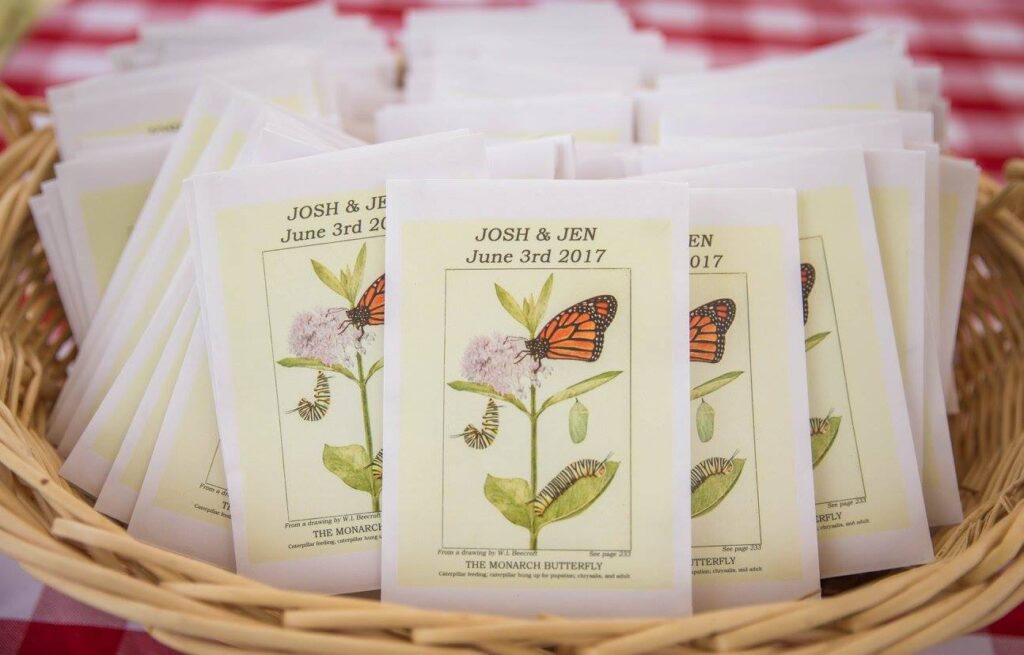
Extend the natural theme to your guests by sharing the beauty of native flowers through thoughtful wedding favors. These gifts not only add a personal touch but also encourage the spread of native plants.
- Seed Packets: Create custom seed packets to commemorate your day. You can choose pre-filled options or fill them yourself with a mix of your favorite native seeds. Just be sure to include planting instructions to help your guests succeed in growing their new garden.
- Seed Bombs: Seed bombs are a fun and interactive favor. Made by mixing seeds, soil, and clay into small balls, they can be thrown into the garden or along a roadside to grow beautiful native flowers. Package them in your wedding colors for an added touch of personalization.
- Live Plants: Offer beginner-friendly native species as live plants, such as plugs or seedlings. This allows guests to take home a living reminder of your special day and encourages the growth of native plants in their gardens.
Pressed Flower Favors
Pressed flowers make unique and memorable keepsakes. Offer beginner-friendly native species as live plants, such as plugs or seedlings. This allows guests to take home a living reminder of your special day and encourages the growth of native flora in their gardens.
- Bookmarks, Candles, Magnets, Keychains, Ornaments: Use pressed native flowers to create personalized gifts for your guests. Pressed native flowers can be crafted into bookmarks for a functional memento, or embedded in candles and ornaments for a lasting piece of nature. Magnets and keychains featuring pressed flowers make practical and lovely souvenirs that guests can use every day.
Using Pressed Flowers in Decor and Stationery
How to Press Flowers
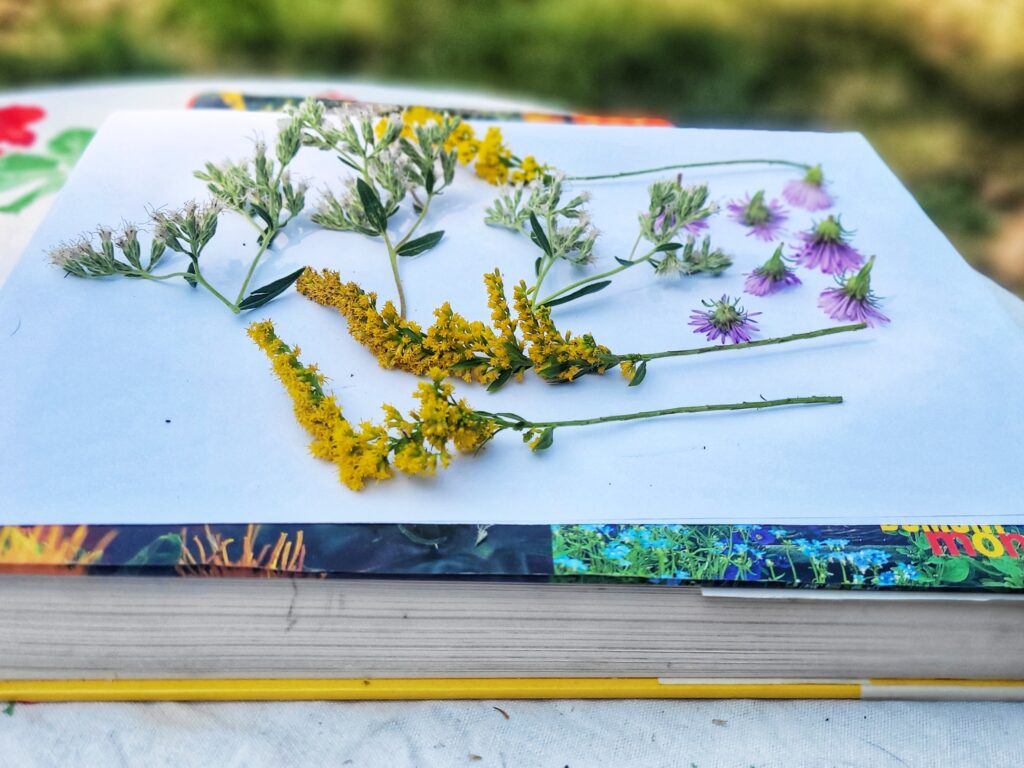
To press flowers, you can either purchase a flower press or create your own using large books and parchment paper. Arrange the flowers face-down, ensuring they don’t overlap, between sheets of parchment paper to absorb moisture. Apply even pressure and check the flowers every few days, adjusting the pressure as needed. This process can take a few weeks, so it’s important to plan ahead to ensure your flowers are ready in time for your wedding.
Wedding Stationery
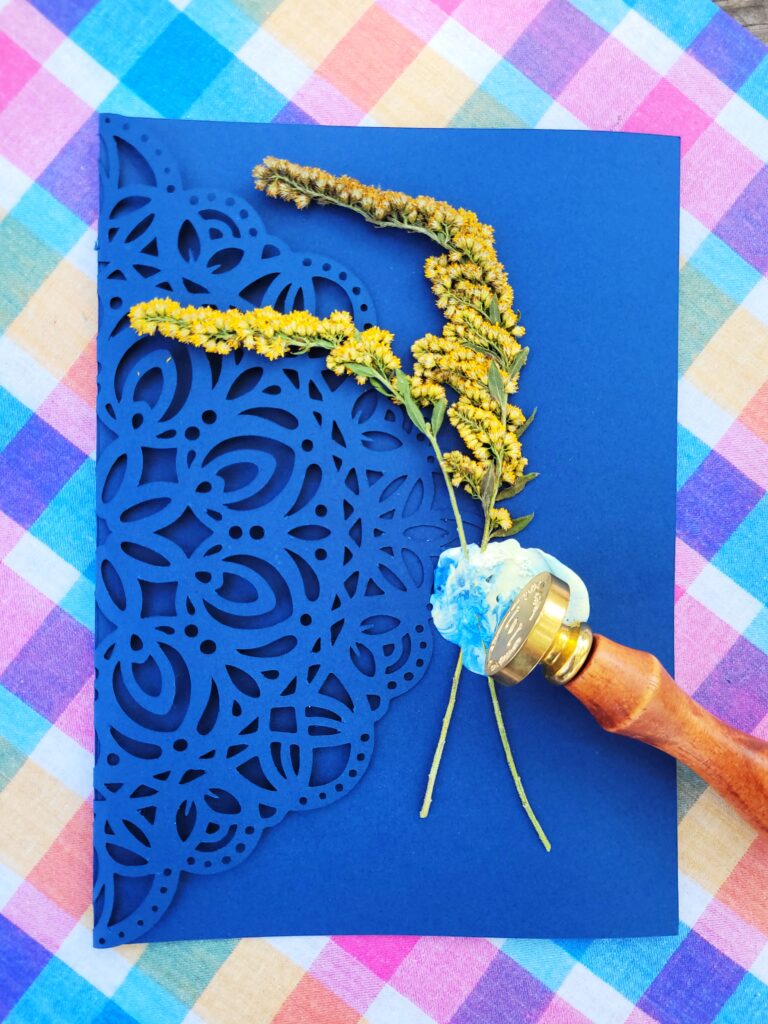
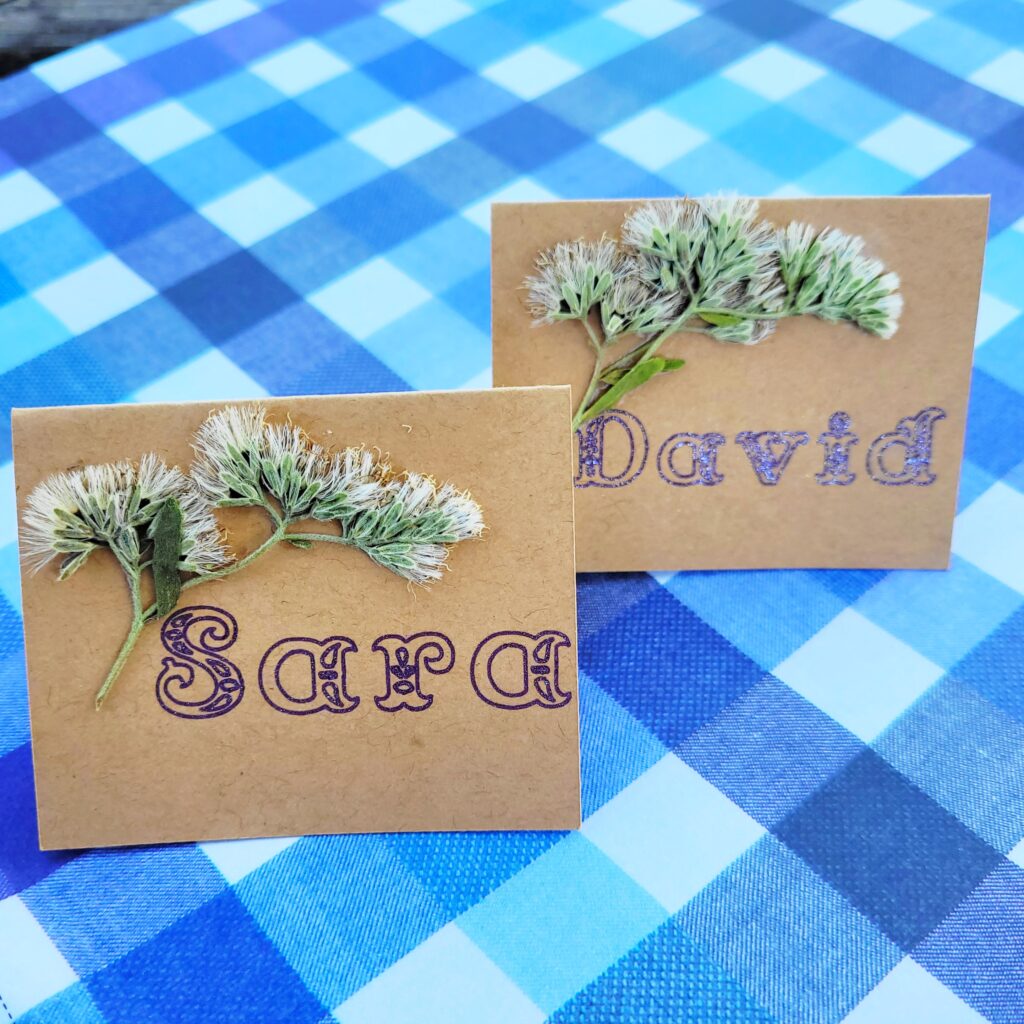
Pressed native flowers can add a unique and personal touch to your wedding stationery. Consider the following ideas to make your invitations and other paper goods stand out:
- Invites and Thank You Cards: Enhance your invites and thank you cards with pressed flowers for personal and memorable look. Each piece will be one-of-a-kind and add a special touch to your correspondence.
- Name Cards and Table Numbers: Use pressed flowers to add a natural element to name cards and table numbers.
Adhesives for Pressed Flowers
PVA glue, clear-drying tacky glue, and Mod Podge are all good options for adhering pressed flowers. Use a small precision applicator or brush for detailed work, and tweezers for delicate petals.
Final Thoughts
Using native flowers in your wedding is a beautiful way to embrace sustainability, personalize your day, and connect with nature. Whether you source your blooms from your garden, a local florist, or opt for pressed flower details, native flowers can bring a unique, eco-friendly touch to your celebration. By choosing locally sourced flowers, you reduce transportation emissions and support sustainable practices.
Start planning your native flower arrangements today and see how they can enhance your wedding while supporting the environment. Embrace this opportunity to create meaningful arrangements and decor and share your love of native plants with your friends and family.
Looking to dive deeper into eco-friendly floral design and sustainable wedding planning? Check out Jen’s curated book list for inspiration, tips, and step-by-step guides to help you create meaningful, nature-inspired celebrations.

